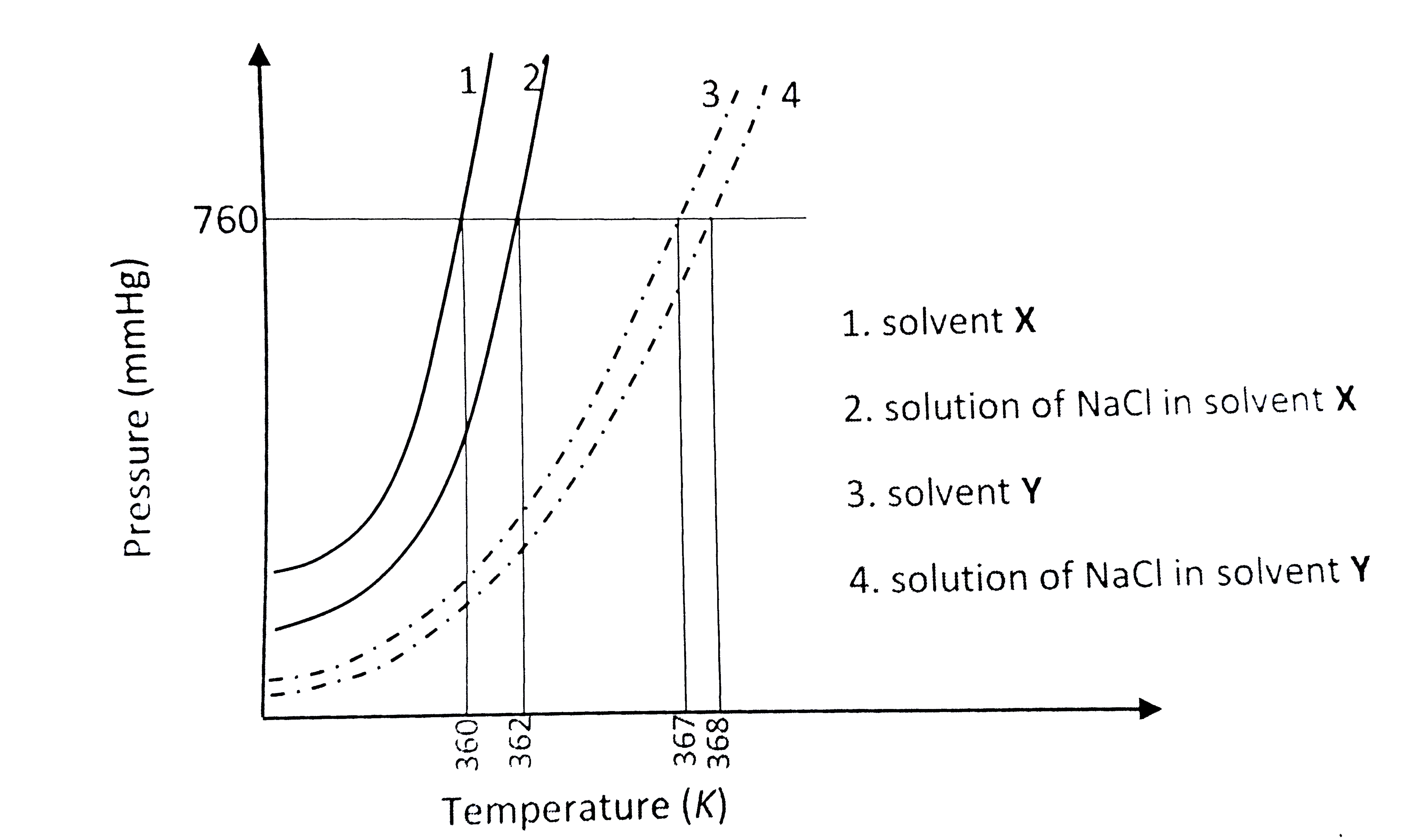The plot given below shows P−T curves (where P is the pressure and T is the temperature) for two solvents X and Y and isomolal solutions of NaCl in these solvents. NaCl completely dissociates in both the solvents.

On addition of equal number of moles of a non-volatile solute S in equal amount (in kg) of these solvents, the elevation of boiling point of solvent X is three times that of solvent Y. Solute S is known to undergo dimerization in these solvents. If the degree of dimerization is 0.7 in solvent Y, the degree of dimerization in solvent X is ____.
(0.05) From graph
For solven X' ΔTbx=2
ΔTbx=mNaCl×Kb(x) …….(i)
For solvent ' Y' ΔTby=1
ΔTb(y)=mNaCl×Kb(y) …….(ii)
Equation (i)/(ii)
⇒Kb(x)Kb(y)=2
For solute S
2(S)1 1−α→S2α−2
i=(1−α/2)
ΔTb(x)(s)=(1−α12)Kb(x)
ΔTb(y)(s)=(1−α22)Kb(y)
Given ΔTb(x)(s)=3ΔTb(y)(s)
(1−α12)Kb(x)=3×(1−α22)×Kb(y)
2(1−α12)=3(1−α22)
α2=0.7
So α1=0.05 .
Topper's Solved these Questions
- SOLUTION Book:ERRORLESS Chapter:SOLUTION Exercise:JEE SECTION (Matrix Match type questions)
Explore 1 Video
- SOLID STATE Book:ERRORLESS Chapter:SOLID STATE Exercise:JEE section (Numeric )
Explore 1 Video
- SOME BASIC CONCEPTS OF CHEMISTRYBook:ERRORLESS Chapter:SOME BASIC CONCEPTS OF CHEMISTRYExercise:JEE Section (Matrix Match type questions)
Explore 3 Videos
Similar Questions
When 50 g of a nonvolatile solute is dissolved in a certain quantity of solvent, the elevation of boiling point is 2.0 K. What will be the elevation of boiling point when 30 g of solute is dissolved in the same amount of the same solvent?
View SolutionAn aqueous solution of 2 per cent (wt./wt) non-volatile solute exerts a pressure of 1.004 bar at the boiling point of the solvent. What is the molecular mass of the solute?
View Solution
Knowledge Check
Addition of a non-volatile solute in a volatile ideal solvent
AIncreases the vapoure pressure of the solvent Decreases the vapour pressure of the solventBDecreases the vapoure pressure of the solventCDecreases the boililng point of the solventDIncreases the freezing point of the solventPartial pressure of solvent in solution of non-volatile solute is given by equation.
Ap=x2p∘Bp∘=xpCp=x1p∘Dp∘=x1pWhen non-volatile solute is assed to a pure solvent, the:
Avapour pressure of the solution becomes lower than the vapour pressure of the pure solventBrate of evaporation of solvent is reducedCsolute does not affect the rate of condensationDnone of these
Effect of adding a non-volatie solute to a solvent is"
View SolutionIf the mass of a nonvolatil, nonelectrolyte dissolved in a solvent is doubled but that of solvent is quadrupled, the elevation in boiling point of the solvent will be
View SolutionThe elevation in boiling point for one molal solution of a solute in a solvent is called
View SolutionThe elevation in boiling point for one molal solution of a solute in a solvent is called
View SolutionThe elevation in boiling point for one molal solution of a solute in a solvent is called
View Solution

